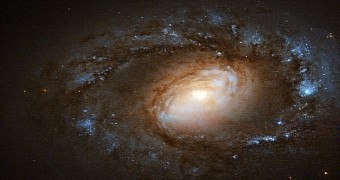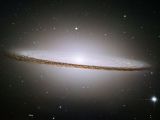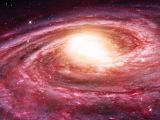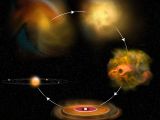Christmas lights might be pretty and all, but they are nothing compared to the twinkle of distant stars, especially when these stars chance to be part and parcel of gorgeously shaped galaxies. Look no further than NASA/ESA space images if you need confirmation.
For instance, it was not too long ago that astronomers released a positively stunning image documenting the anatomy of a distant galaxy dubbed NGC 4102. The image, available below, was obtained with the help of the Hubble Space Telescope.
Specifically, it was put together using infrared and visible information collected by the Hubble Space Telescope's Wide Field Planetary Camera 2, scientists detail.
Introducing NGC 4102
Astronomers who have taken the time to study this cosmic system say that NGC 4102 sits at a distance of about 68.8 million light-years from our planet, in the northern constellation of Ursa Major, otherwise known as The Great Bear.
As noticeable in the Hubble Space Telescope image in the gallery accompanying this article, NGC 4102 is a spiral galaxy. The thing is that, unlike other cosmic systems of this kind, its arms do not reach out far into space. On the contrary, they are tightly wrapped around its core.
Scientists detail that, according to evidence at hand, the galaxy contains a so-called low-ionization nuclear emission-line region (LINER, for short). What this means is that its center emits radiation originating from weakly ionized or neutral atoms of certain elements.
Phys Org tells us that, contrary to what some might assume, LINER galaxies are not few and far between. In fact, about a third of the cosmic systems thus far documented in the proximity of our Milky Way fall into this category.
The galaxy is now creating new stars
Astronomers say that, at its core, NGC 4102 has a rotating disk that measures approximately 1,000 light-years in diameter and that packs the gas and dust equivalent of about 3 billion stars the size of the Sun at the center of our Solar System.
This rotating disk that, when compared to the size of its home galaxy, is actually quite small is now busy birthing new stars. Hence, scientists refer to it as a stellar nursery. What's interesting is that stars are being forged in this region at a more rapid pace than in other galaxies.
This is yet to be confirmed, but researchers suspect that there is a link between the galaxy's LINER and this region of intense star formation processes. Thus, they believe that either the LINER is to blame for the rapid pace at which stars are born in this spiral galaxy, or the star formation processes themselves ended up creating the LINER.

 14 DAY TRIAL //
14 DAY TRIAL // 



